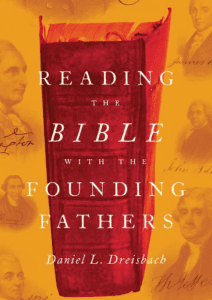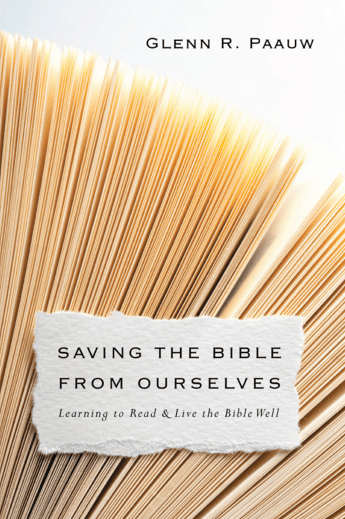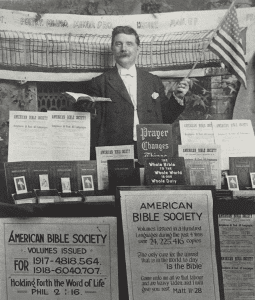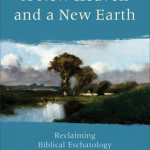 The final chapter of Joel B. Green’s book Body, Soul, and Human Life: The Nature of Humanity in the Bible deals with the resurrection of the body. The Christian hope is in resurrection, without this death wins, evil can win, and we have nothing. As Paul says, without the resurrection our faith is futile.
The final chapter of Joel B. Green’s book Body, Soul, and Human Life: The Nature of Humanity in the Bible deals with the resurrection of the body. The Christian hope is in resurrection, without this death wins, evil can win, and we have nothing. As Paul says, without the resurrection our faith is futile.
The emphasis in Dr. Green’s book is that being human is a totally embodied experience – sin is an embodied phenomenon; virtue and conversion are embodied phenomena; in the same way resurrection is a fully embodied phenomenon. I put Dr. Green’s book aside for awhile – but this final chapter is well worth a post. It both wraps up his book and connects with our current discussion of Adam, especially Adam in the context of 1 Cor. 15.
There are a several themes that Dr. Green emphasizes about resurrection. These hang with his overall thesis that both science and scripture argue against human body-soul duality. I cannot do justice to the full content in one short post. But here is a brief sketch.
1. Life throughout the OT and most of the NT is viewed as a fully embodied existence. There is no “essential person” or soul apart from the embodied existence.
2. There is no clear teaching in scripture of an intermediate state between life and resurrection. Dr. Green argues this point at length – wrestling especially with the writings of Luke. This includes the parable of Lazarus and the rich man, the words of Jesus to the thief on the cross, and the perception of Jesus after the resurrection. I rather expect that this is where many of us may disagree with Dr. Green.
3. Jesus’ existence after the resurrection is not as a spirit, a resurrected corpse, or as an angel – “his, rather, is a transformed materiality, a full bodily resurrection.” (p. 167) He exists in continued relationship with God and with his disciples. He re-establishes the table fellowship that so characterized his ministry. “Hence the post-resurrection persistence of Jesus’ identity is established, first, with reference to his physicality and, second, with reference to relationality and mission.” (p. 168)
Resurrection – whatever it is, however it happens, and it happens only as the divine gift of God, through his power – is a fully embodied phenomenon.
How do you understand the Christian hope in resurrection? What is resurrection?
Jesus, his life, death, and resurrection as the focus of scripture. Dr. Green takes his discussion of resurrection a step further – and looks at resurrection as the culmination of the message and trajectory of scripture. This starts with a look at the nature of the resurrection of Jesus in the book of Luke and its connection with the grand narrative of scripture.
Jesus moves immediately to a third kind of evidence: “Then he said to them, ‘These are my words that I spoke to you while I was still with you – that everything written about me in the law of Moses, the prophets, and the psalms must be fulfilled’ ” (Luke 24:44). Here is the move Jesus makes: He weaves a story; or rather he picks up the story that is already present, the one in the Scriptures, within which, throughout his ministry, he has sought to inscribe himself. In an essential sense, his identity is lodged there, in the grand story of God. What is more, he shows that the Scriptures themselves can be read aright only with reference to him, only insofar as they are actualized in the continuity of his person from life to crucifixion and afterlife, in resurrection. (p. 168-169)
Jesus explained the scriptures to the two on the road to Emmaus, and when the two returned to the eleven and those who were with them in Jerusalem Jesus appeared among them and opened their minds to understand the scriptures.
Resurrection and 1 Cor. 15. The next great passage on Resurrection is 1 Corinthians 15 – a statement of the gospel, the essential reality of the resurrection of Jesus, and an extended discussion of the resurrection body. Here I would like to draw something of a connection and contrast between Dr. Green’s discussion of resurrection in the context of 1 Cor. 15 and Dr. C. John Collin’s discussion the historicity of Adam in light of the same passage.
The first point is that the statement of the gospel in 1 Cor. 15 is a restatement of Jesus as the focus and fulfilment of the scriptures.
For I delivered to you as of first importance what I also received, that Christ died for our sins according to the Scriptures, and that He was buried, and that He was raised on the third day according to the Scriptures (1 Cor. 15:3-4)
This harks back to Luke 24 – the scriptures speak to the mission of Jesus and are only interpreted properly in this context. The comparison between Christ and Adam is likewise a connection of the story of Jesus with the scripture – as completion and as contrast.
For since by a man came death, by a man also came the resurrection of the dead. For as in Adam all die, so also in Christ all will be made alive.
The phrase “in Adam” Dr. Collins identifies as covenantal language. We are in Adam in terms of our relationship with each other and with God. But we are also in Adam in terms of our physical bodies. The first Adam is of the earth, with an earthy corruptible body. This body is subject to death and decay on account of sin – not because the nature of Adam’s body underwent a transformation following his sin (he was of the earth before the fall), but because of the broken communion with God – represented as the expulsion from the Garden and from the Tree of Life. Dr. Green doesn’t make quite this connection – but he reflects on the distinction Paul makes between the earthy body of Adam (Gen. 2:7) and the spiritual or heavenly body of the resurrected Lord. The most significant connection between Adam and Jesus is not typological but ontological. The first Adam was of the earth – he became a living soul – and we are all likewise in Adam and of the earth. The last Adam (Christ), on the other hand, became a life-giving spirit.
Paul insists that the first Adam was dusty, the second Adam heavenly, and in so doing makes use of the physical science of his world (15:47-49). That is, ἐκ γῆς χοϊκός (ek ges choikos, “[of] dust of the earth”) and ἐξ οὐρανοῦ (ex ouranou, “of heaven”) refer to the nature of the two kinds of body – the one made up of the stuff of the earth, dust, and thus well-suited to earthly life; the other made up of heavenly stuff, and thus well-suited to life in the heavens. (p. 174)
Dr. Green points out that Paul’s focus here is not on death, not on sin, not on Adam, but on the resurrection hope and the nature of the bodily resurrection as we are “in Christ”. Paul makes use of scripture and his understanding of heaven and earth to describe the distinction between our present bodies and the resurrection body, but ultimately it is a mystery.
Dr. Collins finds it hard to conceive of a covenantal relationship “in” someone who had no historical existence. Thus Paul’s use of Adam, in his view, implies historicity. But if the focus of 1 Cor. 15 is on the resurrection hope through Christ, then Adam as a historical individual could be incidental to the intent of the text. Mankind as of the earth and in broken relationship with God is essential to the intent of the text, in this way we are “in Adam”. But this does not require Adam as a unique historical individual. The resurrection of Jesus and his role as life-giving spirit is the essential focus of the text. Jesus, who as Paul says in Colossians “is the image of the invisible God, the firstborn of all creation,” is, in fact, the central figure of 1 Cor. 15 and of the narrative of scripture.
Resurrection and Our Future Hope. Dr. Green’s focus in his book is not on Adam, but is on the earthy embodied nature of human existence. If we are fully embodied creatures – what then does this mean for resurrection? It must mean a fully re-embodied resurrection. Dr. Green sums up his discussion of resurrection and his book with three reflections.
First, even for the non-dualist, it is problematic to imagine that human identity is constructed or sustained solely in material terms. ( p. 178) … What I want especially to underscore here, though, is that who we are, our personhood, is inextricably bound up in our physicality, and so is inextricably tied to the cosmos God has created, and in the sum of our life experiences and relationships. (p. 179)
Relationships, with God, with each other, and with the world form and define our personhood.
This means, second, that death must be understood not only in biological terms, as merely the cessation of one’s body, but as the conclusion of the embodied life, … sans divine intervention, there is no part of us, no aspect of our personhood, that survives death. (p. 179)
There is no natural immortality. Immortality is a gift of God.
Third … life-after-death requires embodiment – that is – re-embodiment. … How are we capable of traversing from life to life-after-death? Simply put, we are not. The capacity for resurrection, for transformed existence, is not a property intrinsic to the human person (nor to the created cosmos). This is, as Paul emphasizes, God’s doing. Even if our transformed lives in Christ in this world anticipate, they do not constitute eschatological existence. The glorious, bodily transformation of which Paul speaks is the consequence of resurrection, not the preparation for it. (p. 179-180)
There is no Christian hope without the resurrection and resurrection is “a divine gift, divinely enacted”. Paul did not really have the words or framework to describe the resurrection body – but he knew that it is a body and it is entirely the work of God – a continuation of our existence, but transformed in the new creation, not of the perishable material structures of this world. He brings Adam into the picture not to affirm the historicity of a unique individual (although he may assume historicity) but to contrast the earthy body subject to death and decay with the heavenly resurrection body – imperishable and capable of life everlasting.
I’ve rambled a bit here – from Luke to 1 Cor. to the nature of resurrection. Resurrection, though, is key to our understanding of the Gospel. Paul leaves no doubt about this. If there is no resurrection of the dead, not even Christ has been raised; and if Christ has not been raised our faith is futile. There are a number of questions we could consider – on the nature of resurrection, the nature of the resurrection body. In light of the on-going controversy over Adam I would like to add two other questions to the mix.
What do you see as Paul’s point in 1 Corinthians 15?
How does this relate to the comparison between Adam and Christ?
If you wish to contact me directly you may do so at rjs4mail[at]att.net
If interested you can subscribe to a full text feed of my posts at Musings on Science and Theology.











